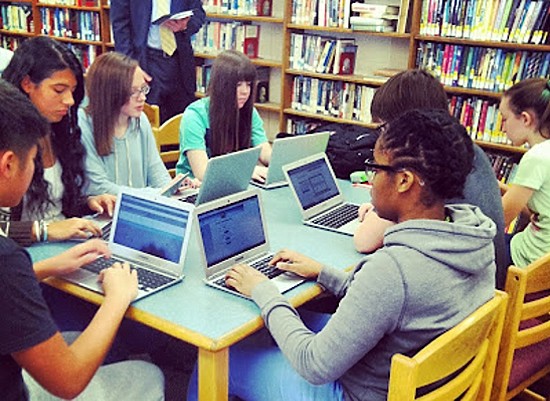Please welcome technology researcher and creative writer, Rakib Md. Azhar Uddin. He holds a degree in Computer Science from Daffodil International University and is a native of Bangladesh where he works with an e-commerce company. In 2021, he co-authored a paper that was featured at the International Conference on Computing and Networking Technology (ICCNT) held in Kharagpur, India. This is his first contribution to 21st Century Tech Blog and welcomes your comments.
Technology is rapidly changing the way we work and learn. For educators and students, it is an avenue for improved engagement and interaction providing students with new ways to learn and grow whether through online learning, virtual reality, educational apps and adaptive learning software.
In this post, we explore how technology impacts student engagement and success and discuss potential benefits and drawbacks. We include some of the latest research and case studies in the field and consider what the future of learning will be like as new technological innovations are invented.
How Technology Impacts Student Engagement
In 2010 Apple published research on how technology could support learning for students with sensory and learning disabilities. This inspired me to look at how this could relate to any student engagement focused on collaboration and communicating among classmates and teachers in new ways. The following lists six ways technology is changing the learning environment for students.
- Improving Motivation – Interactive and multimedia-rich learning experiences, such as simulations, games, and virtual reality, are making learning fun, engaging and more participative in classroom settings.
- Encouraging Collaboration – Educational technologies can facilitate communication and collaboration among students and teachers using online resources such as discussion forums, video conferencing, and document sharing. This creates a sense of shared community and teamwork.
- Personalizing the learning experience – Adaptive learning software allows students to learn at their own pace which helps tailor the educational experience to their needs and abilities.
- Increasing Information Access – Technology has made access to information ubiquitous. Where textbooks have increasingly become prohibitively expensive, the onset of e-books, video, and interactive multimedia content is breaking down the economic barriers to make learning universal regardless of where you live and what you can afford.
- Improving Assessment – Teachers can benefit from educational technology using it to track a student’s understanding and progress, do interactive assessments, quickly identify areas where a learner is struggling and provide instant feedback and immediate additional support.
- Creating Flexible Learning Environments – Learning with technology is no longer limited to a brick-and-mortar classroom. Online and blended learning options allow students to learn anytime and from anywhere. This is particularly beneficial for students unable to attend traditional classes such as those with physical or learning disabilities or students in rural or remote settings.
How Current Technology is Enhancing Learning
The arrival of smartphones and tablets has had a revolutionary impact on communications with opportunities to change how we learn. Mobile devices not only put information resources in our hands but give us access to a growing body of educational apps for students and teachers.
What are these?
- Learning management systems (LMS) are software platforms that allow educators to create, manage, and deliver online course content.
- Gamification employs gaming and game design elements in a non-game learning context.
- Adaptive Learning is software designed to help meet the individual needs of learners.
- Online Tutoring provides real-time instruction and feedback using human resources that can be accessed through the Internet.
- Mobile Learning is more than learning apps that can be accessed from a mobile device. It also considers the aspect of mobility as a methodology for learning experiences beyond the physical classroom
- Social and Collaborative Learning occurs through interaction with others in online communities or collaborative learning environments.
- Simulation and Modelling use programs to help students understand complex systems and compare the real world to computer-generated scenarios.
- Robotics, Artificial Intelligence (AI), and the Internet of Things (IoT) are technologies that can be used to enhance learning delivery to students. And despite the latest controversy over AI, with ChatGPT, the positives of using these technologies in education outweigh the potential negatives.
- Virtual and Augmented reality are two immersive technologies that can be useful teaching aids. And like gamification, their use can motivate students who would normally struggle to learn using traditional classroom techniques and settings.
A Final Word
Technology has already had a significant impact on student engagement and success. It is making interactive and personalized learning experiences possible. It is improving communication and collaboration among students and teachers. It has made education more accessible
It is important to note, however, that technology works best when combined with traditional teaching methods rather than as a replacement.
In the Global South, the biggest challenges are technology accessibility and affordability. But the deployment of worldwide mesh networks like SpaceX’s Starlink and the increasing availability of inexpensive mobile devices will contribute to levelling the learning playing field this decade.








